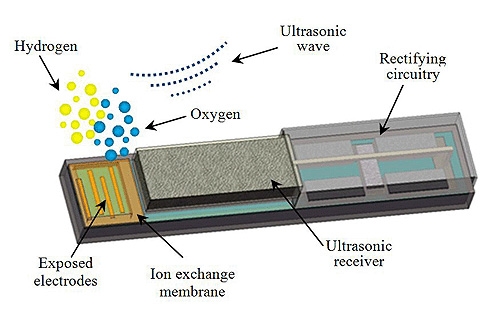According to Purdue University, the technology is designed to treat solid tumours that are hypoxic (oxygen deficient) at the centre.
‘This is not good because radiation therapy needs oxygen to be effective,’ said Babak Ziaie, a Purdue University professor of electrical and computer engineering and biomedical engineering. ‘So the hypoxic areas are hard to kill. Pancreatic and cervical cancers are notoriously hypoxic. If you generate oxygen you can increase the effectiveness of radiation therapy and also chemotherapy.’
The new ‘implantable micro oxygen generator’ is an electronic device that receives ultrasound signals and uses the energy to generate a small voltage to separate oxygen and hydrogen from water, a chemical operation called water electrolysis.
‘We are putting these devices inside tumours and then exposing the tumours to ultrasound,’ Ziaie said. ‘The ultrasound energy powers the device, generating oxygen.’
The devices were created at the Birck Nanotechnology Center in the university’s Discovery Park. Purdue researchers are working with Song-Chu (Arthur) Ko, an assistant professor of clinical radiation oncology at the Indiana University School of Medicine.
Researchers have tested the devices in pancreatic tumours implanted in mice, showing they generated oxygen and shrunk tumours faster than tumours without the devices. The devices are slightly less than one centimetre long and are inserted into tumours with a hypodermic biopsy needle.
A patent application has been filed for the design. Future work may focus on redesigning the device to make it more practical for manufacturing and clinical trials.
More details about the research will be detailed in a research paper featuring in Transactions on Biomedical Engineering later this month.






Project to investigate hybrid approach to titanium manufacturing
Sadly they will not be ordering any more presses from Wilkins & Mitchell http://www.historywebsite.co.uk/articles/Darlaston/WM.htm